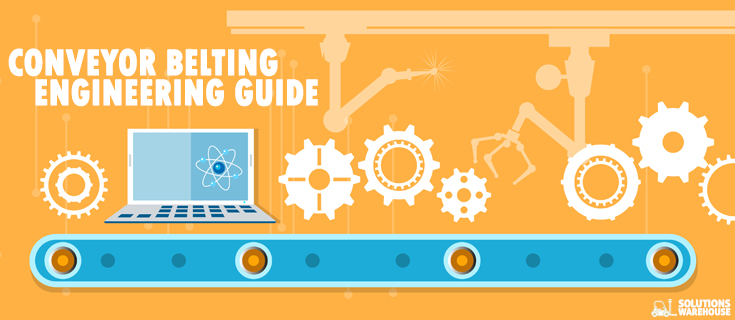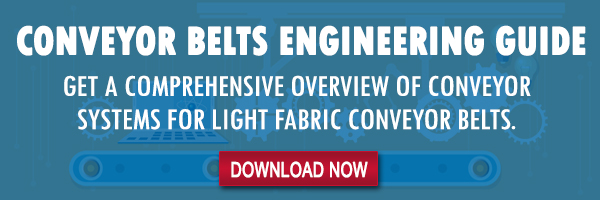 CBT partner Habasit has developed an engineering guide to help you master the most important aspects of the design of conveyor systems for light fabric conveyor belts. This guide enables you to confidently address issues with a positive impact on the belt’s operation and function within the production process.
CBT partner Habasit has developed an engineering guide to help you master the most important aspects of the design of conveyor systems for light fabric conveyor belts. This guide enables you to confidently address issues with a positive impact on the belt’s operation and function within the production process.
Light fabric conveyor belts
Light fabric conveyor belts are, according to the International Standard ISO 21183-1 “Light conveyor belts – Principal characteristics and applications”, predominantly used for the indoor transport of unit loads, like industrial goods of all kinds and foodstuffs, parcels, boxes, crates, cans, containers, luggage, etc. Fabric conveyor belts are made of various layers, where the tensile strength is provided by synthetic fabric plies. In light fabric conveyor belts, the fabric is usually made of polyester, but is sometimes composed of polyamide or aramide. The fabrics are connected by bonding agents or by means of intermediate layers of thermoplastic materials. The conveying side is function-related in material, thickness, and texture. Coatings are mainly made of thermoplastic materials like TPU, TPO, PVC, etc. and elastomers like rubbers, PUR, etc. The running side is usually a fabric, often impregnated with a thermoplastic material or with special wear- resistant PUR. Fabric conveyor belts are manufactured in large widths, transported in coils and then fabricated to any required dimensions. According to the belt construction and target application, fabric belts are distinguished in common “conveyor belts” and highly specialized “processing belts.”
Conveyor belts
The term “conveyor belt” describes belts used to convey all kinds of semi-finished and finished industrial products from one point to another. They are mainly used in the handling of unit goods both in the food and non-food production and packaging sectors and in general materials handling for storage and distribution.
Processing belts
The term “processing belts” is used for belts that not only perform purely conveying functions, but also have to fulfill important functions in the actual work process. Typical examples of processing belts are:
- Belts in the processing of unpacked and packed food
- Printing blankets on textile printing machines
- Crosslapper belts in nonwoven production
- Prepress belts in particle board production
- Treadmill belts, etc.
Unit and bulk goods
Although fabric belt conveyors are used primarily to convey small to medium sized unit goods, they can also be used for conveying bulk materials. As far as fabric belt conveyor engineering is concerned, bulk materials are generally categorized as granular, such as corn, rice, sugar, or even powder.
Belt selection and belt data
The choice of the optimal conveyor belt is a precondition for effective system operation and is often determined by the mechanical, thermal and chemical requirements of both the actual processes involved and the materials being transported. Habasit and CBT provide a broad range of application experience and technical expertise and general product support worldwide. Download Habasit’s Fabric Conveyor Belts Engineering Guide or contact your CBT belting specialist today to learn more about fabric conveyor belts.













